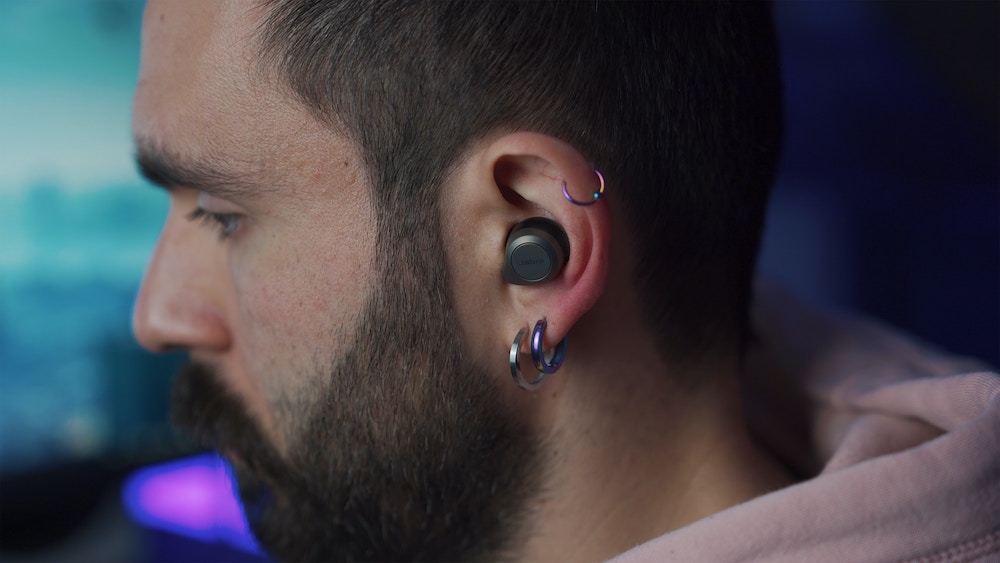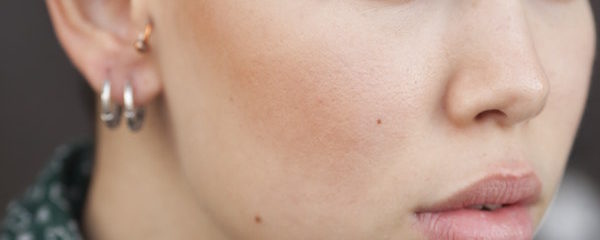How Does Cartilage Heal? Everything You Need to Know for Your New Piercing December 27, 2019 – Posted in: Informative – Tags: cartilage piercing care, cartilage piercing healing, cartilage piercings, cleaning a cartilage piercing, healing piercings, how to clean cartilage piercings, nose piercings, piercings aftercare, wound healing
Cartilage piercing care highlights:
- Cartilage piercings take at least 6 – 9 months to heal, during which time you must adhere to all aftercare practices.
- Many cartilage piercing complications occur due to stopping care too early.
- Do not stop caring for your piercing until your piercer has confirmed that healing is complete.
Cartilage piercings are among the most common piercing types. As some of the most accepted piercings, they allow their wearers to showcase some personality without fear of social stigma. Even an ear filled with piercings is considered acceptable in most settings.
Because of their popularity, there’s a common misconception that cartilage piercings are easy to heal. After all, if almost everyone has one, they must be pretty effortless, right?
Unfortunately, the opposite is true. Cartilage piercings take a long time to heal, and because of that, they are more susceptible to complications, especially piercing bumps. However, this doesn’t mean that getting a cartilage piercing will guarantee problems. It only means that you will have to dedicate time and energy to ensure that your new cartilage piercing heals safely.
Here’s our complete guide to cartilage piercing care and how to avoid complications.

Photo by Onur Binay on Unsplash
How long do cartilage piercings take to heal?
Cartilage piercings take a minimum of 6 – 9 months to heal, sometimes longer. Your healing times will depend upon your adherence to aftercare, your body’s ability to heal itself, and whether your piercing stayed safe from snags and tears. Unfortunately, even if you do everything right, it might take longer to heal than anticipated. It’s just the way it is.
Because your cartilage piercing will appear healed before it has fully healed internally, you must visit your piercer to have them confirm that healing is complete before stopping aftercare practices. Many issues arise because piercees stop cleaning their piercing before it’s fully healed. To avoid this, continue careful care until your piercer has told you that it’s okay to stop.
Why does cartilage take so long to heal?
Cartilage piercings are some of the longest-healing piercings. This is because cartilage does not heal as easily as other tissue. It does not regenerate quickly, and it has little blood flow, which is necessary for healing. Although cartilage piercings can heal safely, they will need a higher level of care to avoid complications.
How to clean a new cartilage piercing
Cleaning a new cartilage piercing is the same as any other piercing: spray a piercing aftercare saline solution, like NeilMed, onto a cotton swab or clean paper towel, then gently wipe the front and back of the piercing, taking care not to move the jewelry too much. Once complete, dab the piercing dry. That’s it! You should do this 2 – 3 times daily.
Buy NeilMed Piercing Aftercare here.
It’s important that you keep the jewelry both still and dry during and after cleaning. Friction, snags, and movement of the jewelry can damage the healing piercing, leading to issues like piercing bumps or irritation, while dampness can also cause problems like bumps or scarring.
Furthermore, you should keep all products except saline spray away from the piercing throughout the healing period. This includes shampoo, tea tree oil, sunscreen, and other daily products that may be used near the piercing. When you take a shower, make sure to fully rinse your ear after you shampoo, then immediately dry the piercing when you step out of the shower. If lotion or makeup gets onto the piercing as you get ready for your day, immediately clean and dry the piercing.
Aftercare mostly consists of mindfulness. Simply keep your cartilage piercing clean, and protect it from snags and friction for the entire 6 – 9 month healing period, and it should be fine.

Photo by Samanta Sokolova on Unsplash
Cartilage piercing aftercare rules
Besides keeping your cartilage piercing clean, there are a few things that you need to avoid throughout the healing period.
- Do not go swimming, hot tubbing, or bathing. Dampness causes many issues in a healing piercing, so you must do what you can to keep your piercing dry. When you get out of the shower, immediately dab it dry with a clean paper towel, and if you sweat throughout the day, do what you can to keep it from staying damp.
- Do not sleep on the side with the piercing. Friction and pressure can damage the delicate healing skin. If you must sleep on your side, use a travel pillow so that you can place your ear inside the hole and sleep on your side that way.
- Avoid beanies, headphones, or other accessories that will press on the jewelry. These will also cause complications.
- Do not change the jewelry until the piercing has fully healed. If you must change the jewelry (such as if it’s snagging or if you need a different style for work), then visit your piercer and have them change your jewelry for you.
- Be careful with your hair. Long hair can easily snag and tug at the jewelry. It might also twist around the jewelry and get stuck. When doing your hair, remain mindful, and do your best to keep it away from your earrings.
- When crusties form, do not pick at them. Instead, dampen them with your piercing aftercare spray, then gently dap them away with a cotton swab or clean paper towel.
Common cartilage piercing side effects
Unfortunately, even if you do everything right, side effects may occur. Luckily, most piercing side effects are not permanent, but they can be annoying. Here are some of the most common ones.
Piercing irritation is characterized by bumps or dry skin around the piercing site. It can occur for a variety of reasons, but it’s often due to improper jewelry materials or using the wrong products on your piercing. If you start to see irritation, stop using any non-piercing products on your piercing, and visit your piercer to ensure the jewelry is the correct size and shape for the stage of healing that you are currently in. Often a downsize of your post can help prevent motion and friction that results in irritation bumps forming.
Piercing bumps take a variety of forms. They are caused by trauma from snags, improper placement, poor aftercare practices, dampness, and more. Because there is such a wide variety of piercing bumps caused for a plethora of reasons, your best bet is to visit your piercer and have them take a look and suggest ways to get rid of it.
Piercing infections are actually relatively rare, but they do happen. They occur when the piercing has not been properly cleaned. If your piercing starts swelling or bleeding weeks after the piercing took place, starts excreting yellow or green pus, or starts hurting pretty badly, then you may have a piercing infection. In these cases, visit a medical professional immediately.
If you start to see a side effect in your cartilage piercing, do not self-diagnose. There is too much bad information out there, and you might end up making things worse. Instead, visit your piercer for consultation. Remember, they want you to heal safely, and they will be happy that you asked for assistance rather than ignoring it or making it worse.
Cartilage piercings tend to see more difficulties during healing, but if you practice ardent care throughout the entire healing process, then there’s no reason why they can’t heal safely. Simply clean it 2 – 3 times daily, keep it dry and safe from snags, and continue aftercare until a piercer has confirmed that healing is complete.








